Region 3 wild coregonine broodstock collection activities for FY 2019 in support of restoration activities on Lake Huron and Lake Ontario
Contributing Authors
Scott Koproski (USFWS, scott_koproski), Kevin McDonnell (USFWS), Chris Olds (USFWS), Ted Treska (USFWS), Roger Gordon (USFWS)
Executive Summary
The U.S. Fish and Wildlife Services Midwest Region Fisheries Program carried out two projects in support of a multi-agency effort to restore coregonid populations in Lake Huron and Lake Ontario. The first project began in 2017 when USFWS started collecting cisco (Coregonus artedi) in Northern Lake Huron in support of the development of a line of captive brood stock at the Jordan River National Fish Hatchery (NFH). From 2017 to 2020 cisco gametes were collected from two sites in Northern Lake Huron (Les Cheneaux Islands and Drummond Island) using short set gillnets (90m) weekly during January and February. No sampling occurred during 2019 due to the federal shutdown. Sampling continued until ~100 spawning pairs were collected, and all eggs were transferred to the Jordan River NFH for incubation. Each spawn pairing (family) consisted of one female crossed with two males. There were a total of 120 families used in 2018, whose progeny represent an effective population size (Ne) of 320 individuals (Kapuscinksi and Jacobson 2007). In 2020, a total 75 families were used which produced a separate progeny line with an estimated effective population size of 200.
Outcomes
A total of 467 pairs of cisco were used to develop the broodstock between 2017 and 2020
A total of 204 pairs of bloater were collected in 2018 and 2020
Over 2.8 million cisco were stocked (2018-2020) in Saginaw Bay
